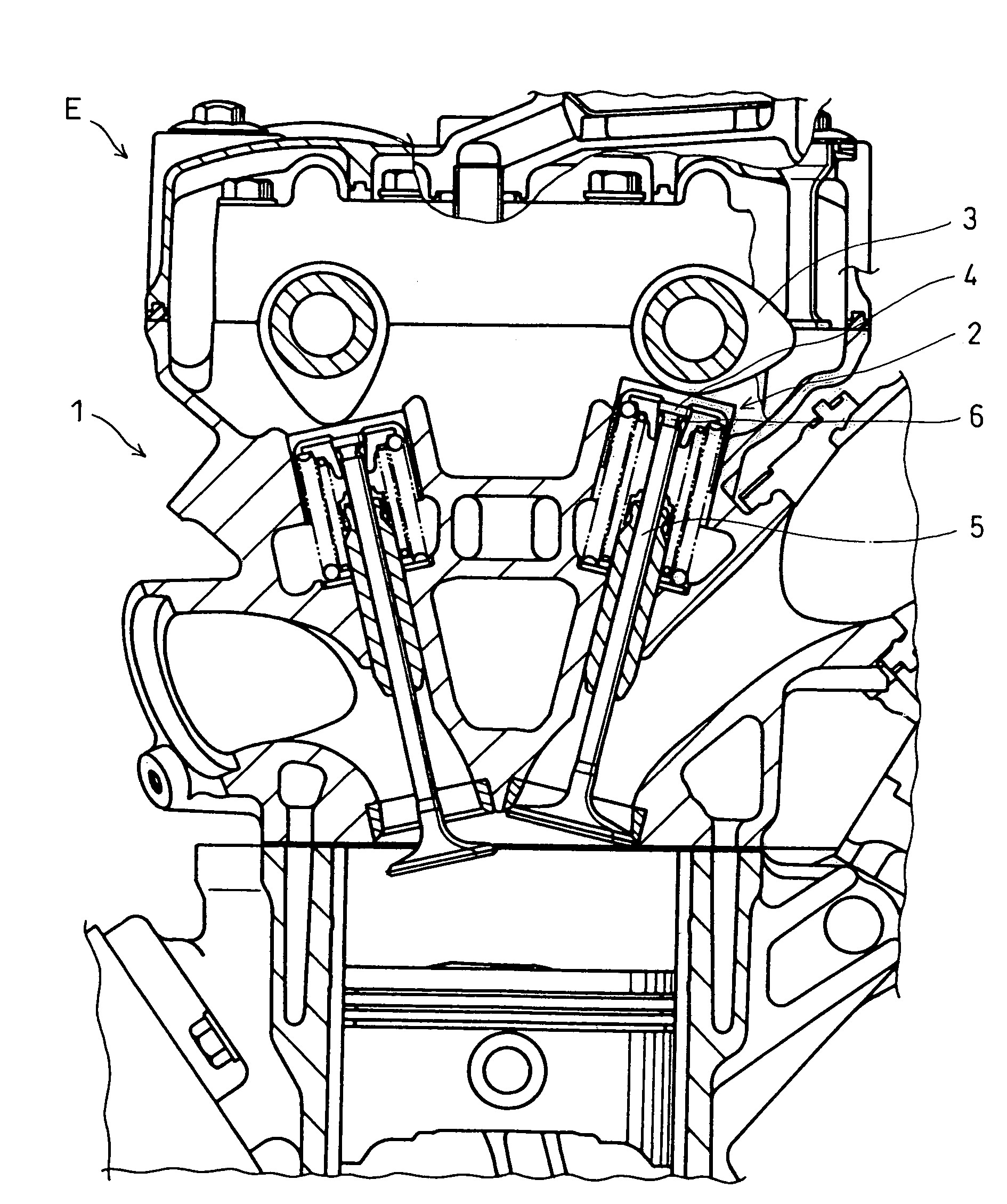Titanium alloy valve lifter
a technology of titanium alloy and valve lifter, which is applied in the direction of valve arrangement, machines/engines, mechanical equipment, etc., can solve the problems of brittle -case, poor sliding properties of the cam, and more likely to occur pitting, etc., and achieves moderate grinding energy of the vibration barrel machine, good surface roughness, and high grinding energy
- Summary
- Abstract
- Description
- Claims
- Application Information
AI Technical Summary
Benefits of technology
Problems solved by technology
Method used
Image
Examples
example 1
[0029]Using a titanium alloy composed of 0.96 wt % of iron (Fe), 0.32 wt % of oxygen (O), and the remainder including titanium (Ti) and unavoidable impurities, billets (diameter=28 mm and height=7 mm) were produced by machining. Lubricant was then applied to these billets and the billets were dried sufficiently. These billets were forged by a press with a die set, to obtain primary materials 2a for the valve lifter 2. FIG. 2 shows such a primary material 2a.
[0030]Parts of each of the primary materials 2a were cut by machining and ground to produce a secondary material 2b as shown in FIG. 3. At this time, dimensions of the parts were nearly equal to those of a finished valve lifter.
[0031]After being washed sufficiently, the secondary materials 2b were put into a heating furnace at 700° C. and held for seven hours for an oxidation treatment. The atmosphere in the furnace was atmospheric air. As a result, as shown in FIG. 5, (1) an oxide layer 21, (2) an α-case 22, and (3) an oxygen d...
example 2
[0037]In order to ascertain a proper thickness of the α-case 22, the valve lifters 2 whose α-cases 22 were about 2, 3, 5, 7, 10, 15, and 18 μm thick were produced by adjusting the temperature and time period of the oxidation treatment in a similar process to that of the Example 1, and the valve lifters 2 were subjected to the same durability tests in a similar way. The surface roughnesses thereof were set to uniform maximum height roughness Rz of 3 (JIS B 0601:2001). In the valve lifter 2 whose α-case 22 was 2 μm thick, the oxygen diffusion layer 23 under the α-case 22 was about 7 μm thick. In the valve lifters 2 whose α-case 22 was 3 μm thick or more, the oxygen diffusion layer 23 was 10 μm thick or more. The results of the durability tests show that in the case of the valve lifter 2 whose α-case 22 and oxygen diffusion layer 23 were 2 μm and 7 μm thick, respectively, wear occurred on the sliding surface on which the cam 3 slides during the durability tests. Therefore, the durabili...
example 3
[0039]Next, using the valve lifters 2 in which the α-case 22 was about 7 μm thick and the oxygen diffusion layer 23 was about 20 μm thick, effects of the roughness of the sliding surface on which the cam 3 slides were checked with the roughness varied. The valve lifters 2 with maximum height roughnesses Rz of about 2, 3, 4, 5, and 7 were prepared by grinding with the use of the vibration barrel machine to obtain the valve lifters 2 having surface roughness of a maximum height roughness Rz of about 2 and by subsequenly adjusting the roughnesses to the above values by means of minute-particle shot blasting. Each of these valve lifters 2 was set in the aforementioned internal combustion engine for the durability tests. After the tests were finished, the amount of wear of the cam 3 was measured. In the cam 3 which was caused to slide on each of the valve lifters 2 with a maximum height roughness Rz of not more than 4, the amount of wear was equal to or less than that in the cam 3 which ...
PUM
| Property | Measurement | Unit |
|---|---|---|
| thickness | aaaaa | aaaaa |
| thickness | aaaaa | aaaaa |
| thickness | aaaaa | aaaaa |
Abstract
Description
Claims
Application Information
 Login to View More
Login to View More - R&D
- Intellectual Property
- Life Sciences
- Materials
- Tech Scout
- Unparalleled Data Quality
- Higher Quality Content
- 60% Fewer Hallucinations
Browse by: Latest US Patents, China's latest patents, Technical Efficacy Thesaurus, Application Domain, Technology Topic, Popular Technical Reports.
© 2025 PatSnap. All rights reserved.Legal|Privacy policy|Modern Slavery Act Transparency Statement|Sitemap|About US| Contact US: help@patsnap.com



